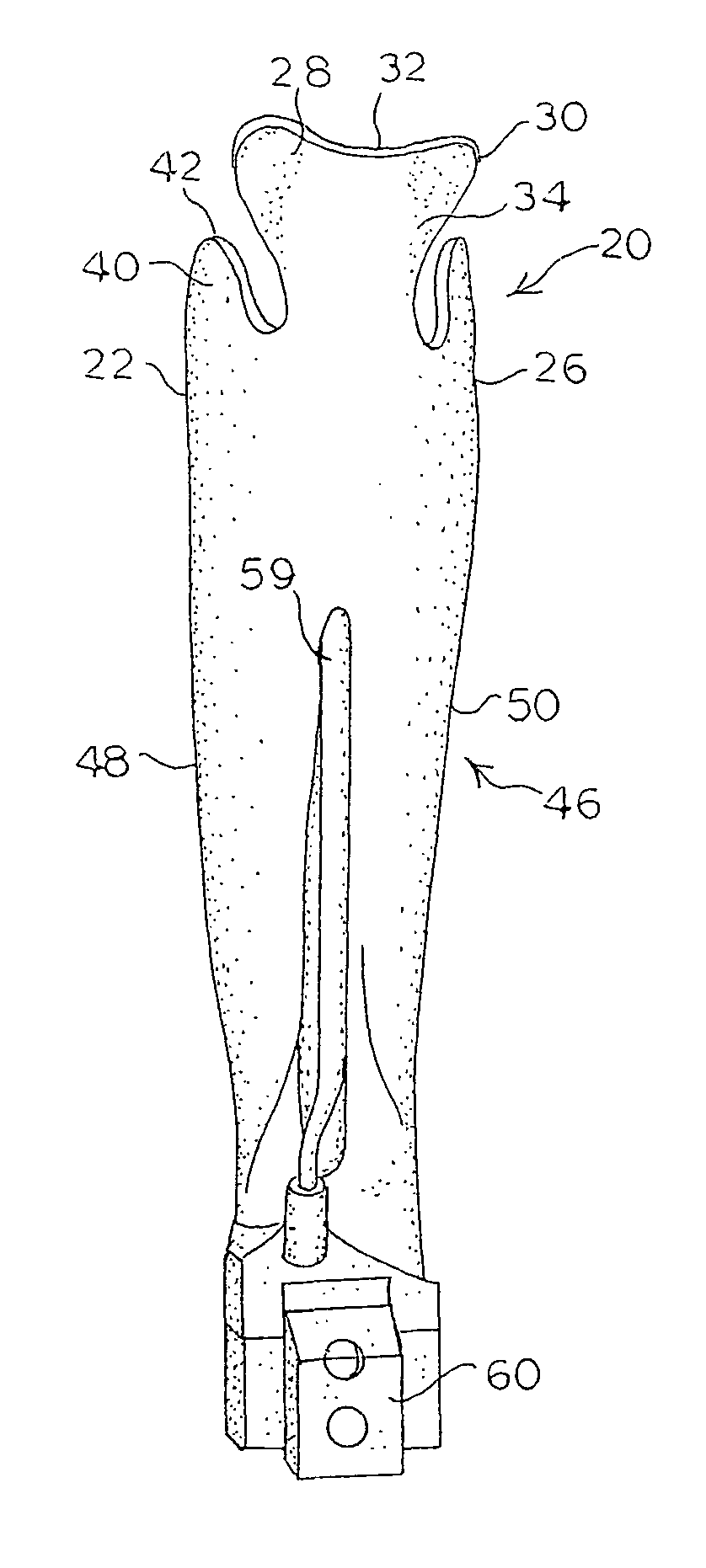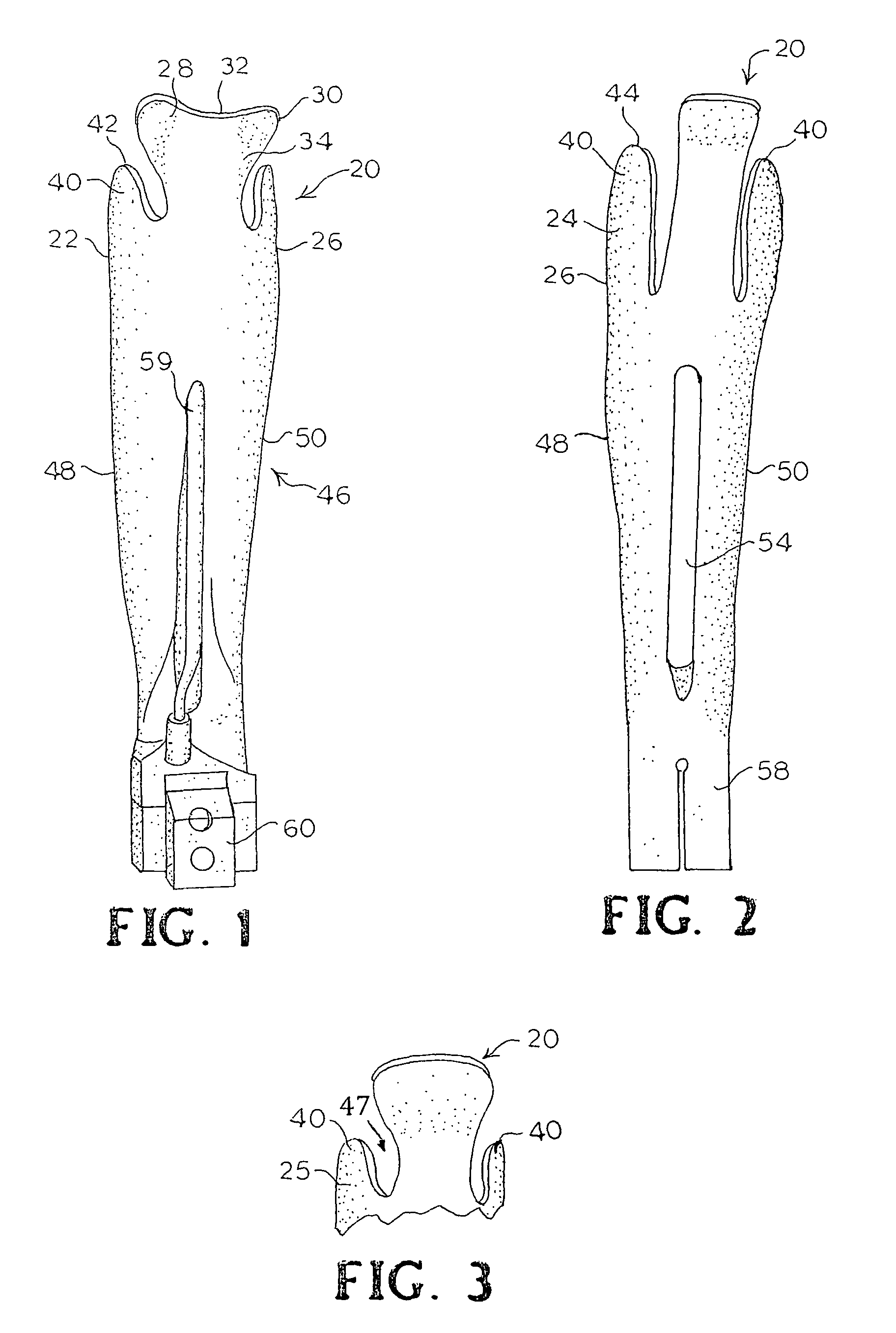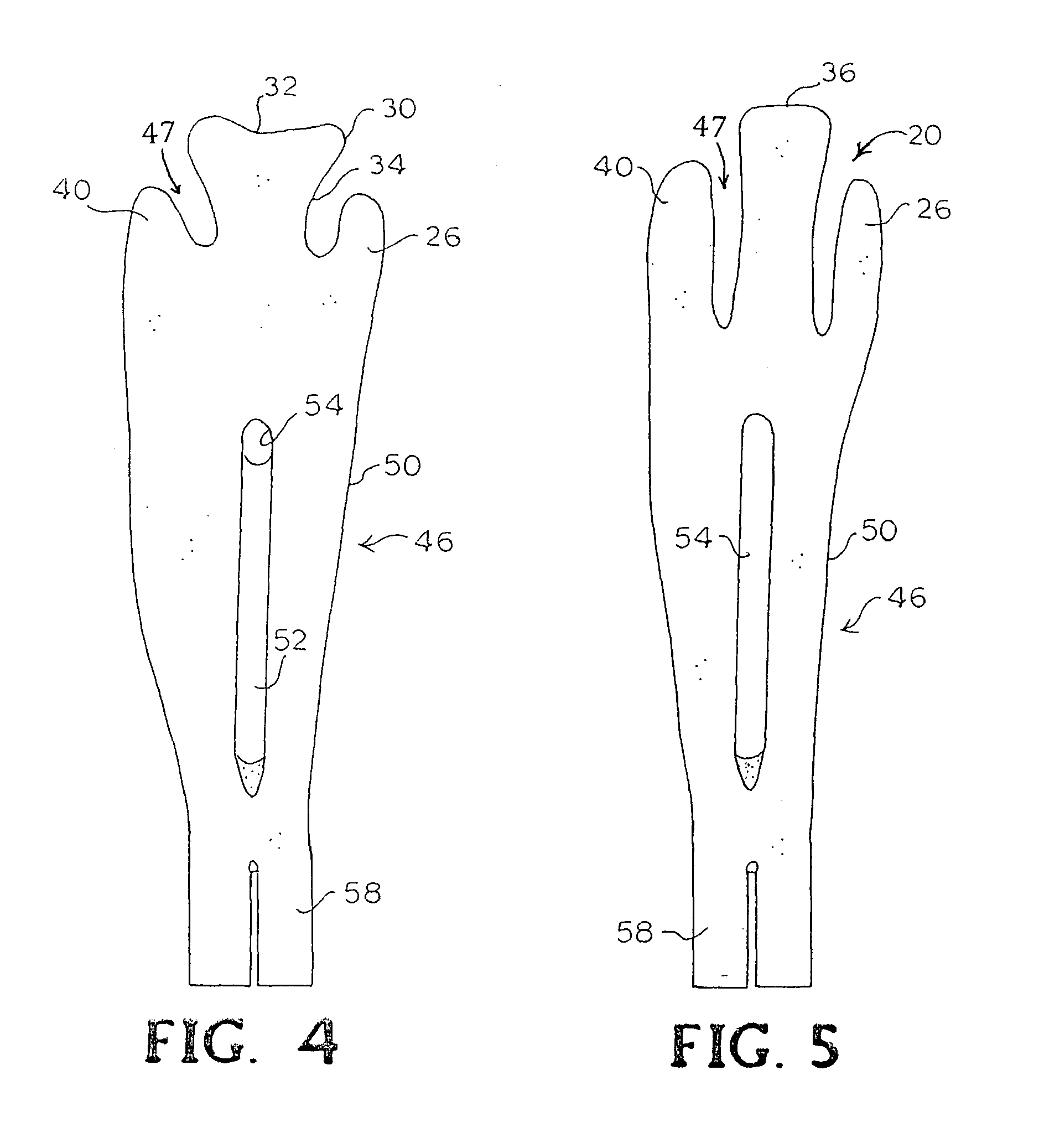Laryngoscope blade
a technology of laryngoscope and blade, which is applied in the field of laryngoscope, can solve the problems of difficult to see down the patient's throat, difficult orotracheal intubation, and insufficient dislocation of prior structures
- Summary
- Abstract
- Description
- Claims
- Application Information
AI Technical Summary
Benefits of technology
Problems solved by technology
Method used
Image
Examples
Embodiment Construction
[0030]The present invention is a laryngoscope blade having a flanged structure that compresses the tongue and oropharynx anteriorly as well as displacing the bulk of the tongue distally left and right with the tongue going equally both ways at the same time. A first embodiment 22 of the invention with a straight tip and a third embodiment 25 with a spoon tip is particularly useful for direct manipulation of the epiglottis, while a second embodiment 24 with a curved tip is particularly useful for manipulating the epiglottis via the valecula.
[0031]As used herein, the term “downward” or “below” refer to the side of the invention that is inferior (roof of mouth) when the blade is inserted into the throat of a supine person, as shown in FIG. 15. The term “distal” refers to portions of the blade away from the handle, and the term “proximal” refers to portions of the blade closer to the handle.
[0032]The laryngoscope blade 20 of the invention may be made of different materials, and is prefe...
PUM
 Login to View More
Login to View More Abstract
Description
Claims
Application Information
 Login to View More
Login to View More - R&D
- Intellectual Property
- Life Sciences
- Materials
- Tech Scout
- Unparalleled Data Quality
- Higher Quality Content
- 60% Fewer Hallucinations
Browse by: Latest US Patents, China's latest patents, Technical Efficacy Thesaurus, Application Domain, Technology Topic, Popular Technical Reports.
© 2025 PatSnap. All rights reserved.Legal|Privacy policy|Modern Slavery Act Transparency Statement|Sitemap|About US| Contact US: help@patsnap.com



